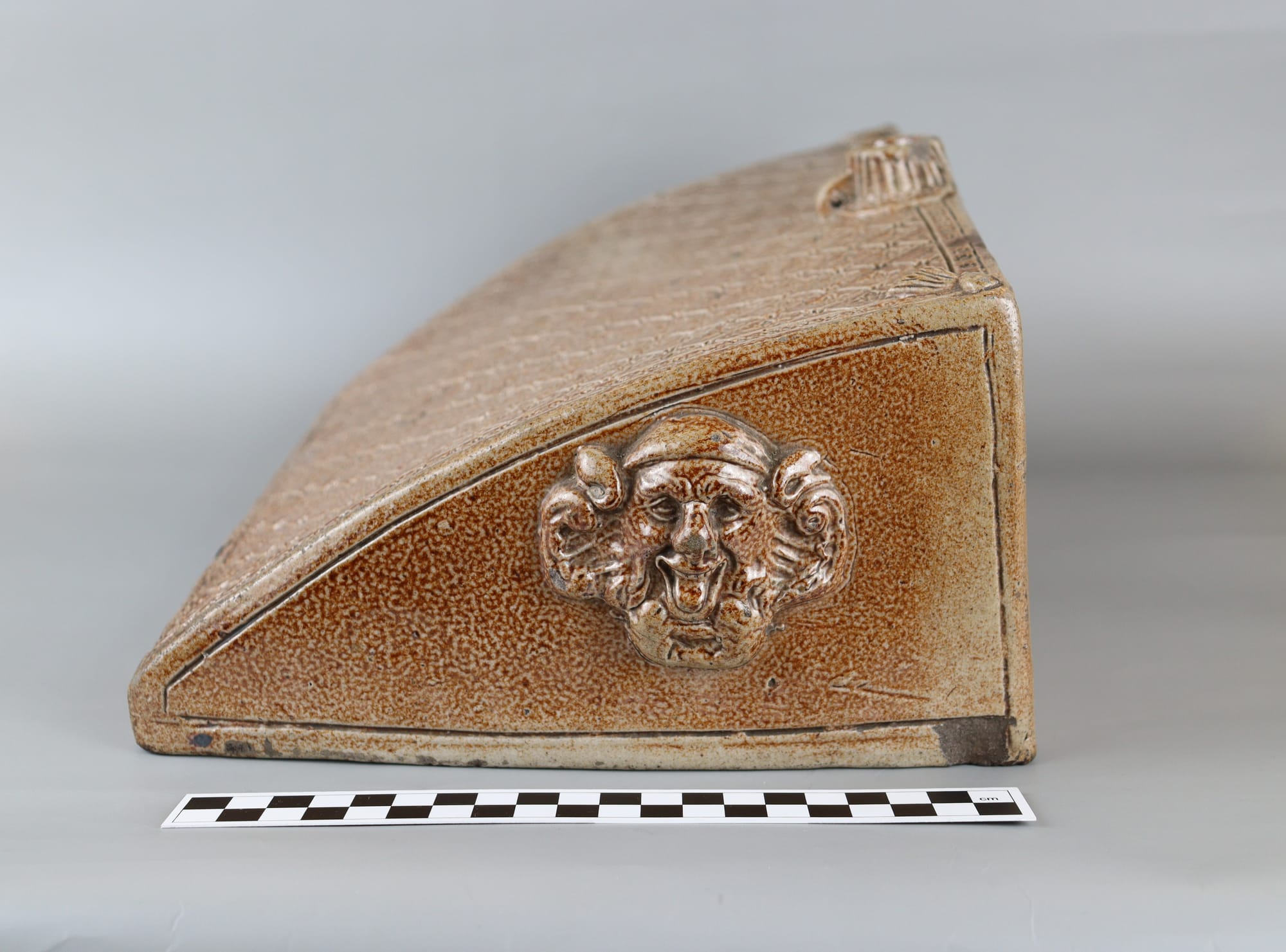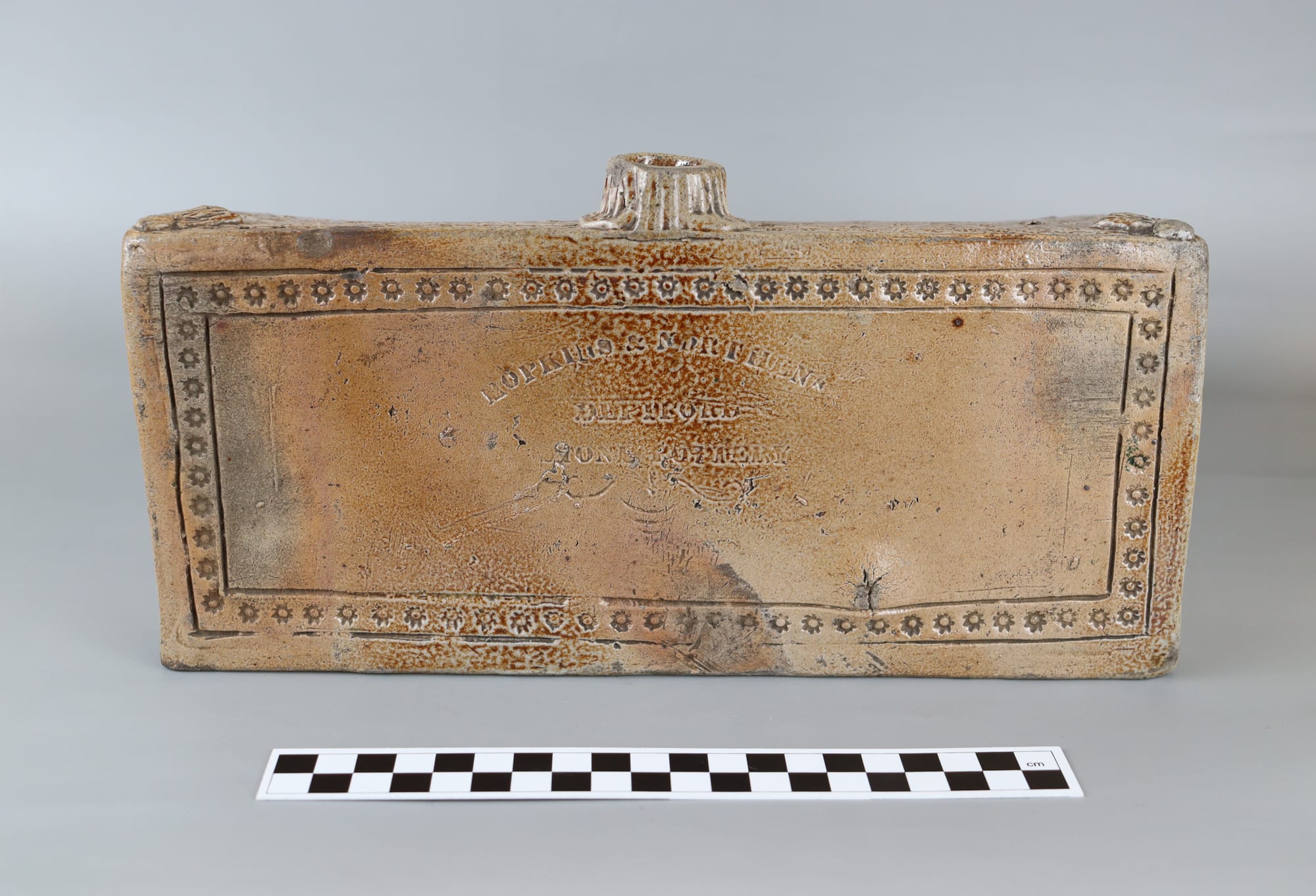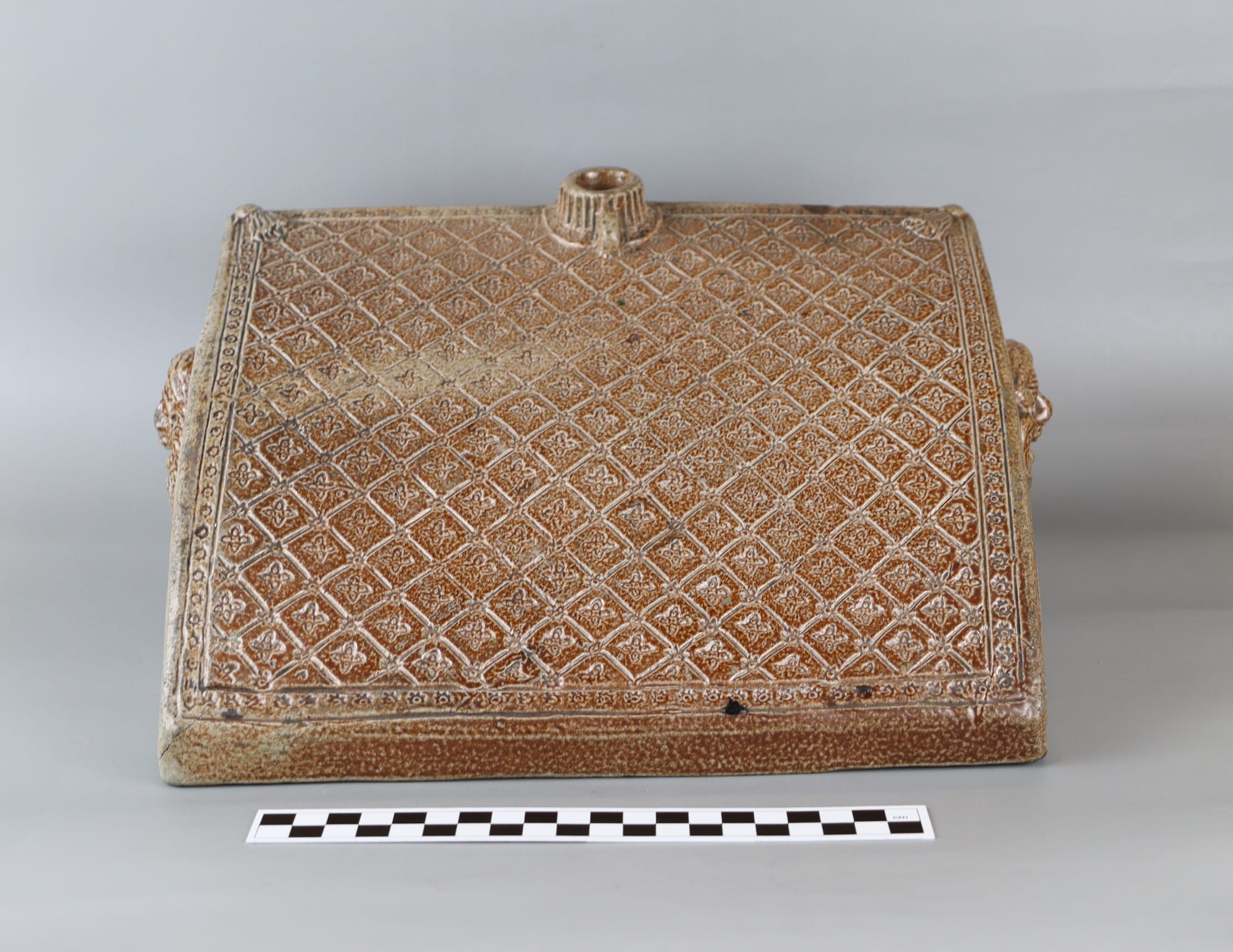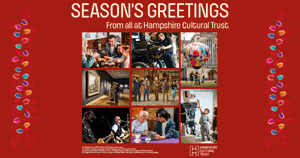Hampshire Cultural Trust received funding from the National Lottery Heritage Fund to help reimagine the Allen Gallery and its nationally significant ceramic collection. As a part of this project, we are researching and discovering the collections’ untold stories.
This month’s article explores a nineteenth century, everyday object with an unusual form.
Ceramic Footwarmer by Hopkins and Northen

To warm yourself up in the winter months you might think of curling up under a blanket with a toasty hot water bottle. In the 19th century hot water bottles were very different; no rubber and fluffy covers here, instead they were made from clay.
This example from the Allen Gallery collection is not just a hot water bottle; it’s a footwarmer, designed to keep the user warm when travelling in a horse-drawn carriage or train. The first footwarmers consisted of a pierced metal container filled with hot coals or embers – the same principle used to warm beds during this period too. Footwarmers were a luxury item, and only some travellers were wealthy enough to afford one to warm themselves on their journey. Poorer travellers would carry a pre-heated brick, stone or even a potato to try to keep themselves warm – or gone without!

Ceramic bottles, filled with hot water, became common during the 19th and early 20th centuries, as mass-produced goods became cheaper and more readily available. Our example was made by Hopkins and Northen of Deptford, London, which were one of several small potteries based in London in the 1800s, manufacturing functional items such as flasks and bottles.
This wedge-shaped bottle appears to be a more unusual design. The shape stopped the bottle rolling around the carriage and provided a comfortable, flat surface for the traveller to rest their feet upon.
This footwarmer is described as salt-glazed stoneware, which means that before the clay was fired at a high temperature common salt was thrown into the kiln, to produce a glossy glaze with an ‘orange-peel’ texture. This is also a highly decorated footwarmer, featuring diaper decoration; this is an architectural term for a repetitive pattern of squares or diamonds. Each shape contains a decoration such as leaves or flowers. You might also see this type of pattern in heraldic shields, stained-glass windows and brickwork patterns of the medieval period.
During the Victorian era, there was a popular move to romanticise and be inspired by the Medieval period. This can be partly explained as a reaction against the rapid advances of the industrial age and the urbanisation of the country, and the subsequent poverty and perceived loosing of morals that abounded in cities. The Middle Ages were seen as a more chivalrous, moral, and generally simpler time. This Gothic Revival influenced many artists and writers, including William Morris, John Ruskin and Sir Walter Scott. It may be that this Gothic style has influenced the diaper design on this footwarmer, and the masks on either end of the footwarmer may have possibly been inspired by the stone carvings seen on many medieval churches.

Whatever the thought process behind the design on this footwarmer, it certainly is an unusual object that conjures images of Victorian travellers making their way across the countryside wrapped up tightly with their feet gently warmed in style.
With research contributions from Karen Stewart, Ceramic Research Volunteer.




